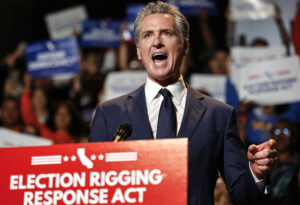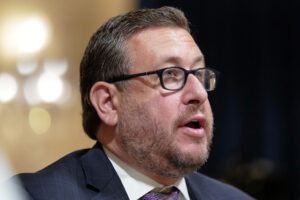Politics
Black leaders feel under siege after Trump’s DC takeover
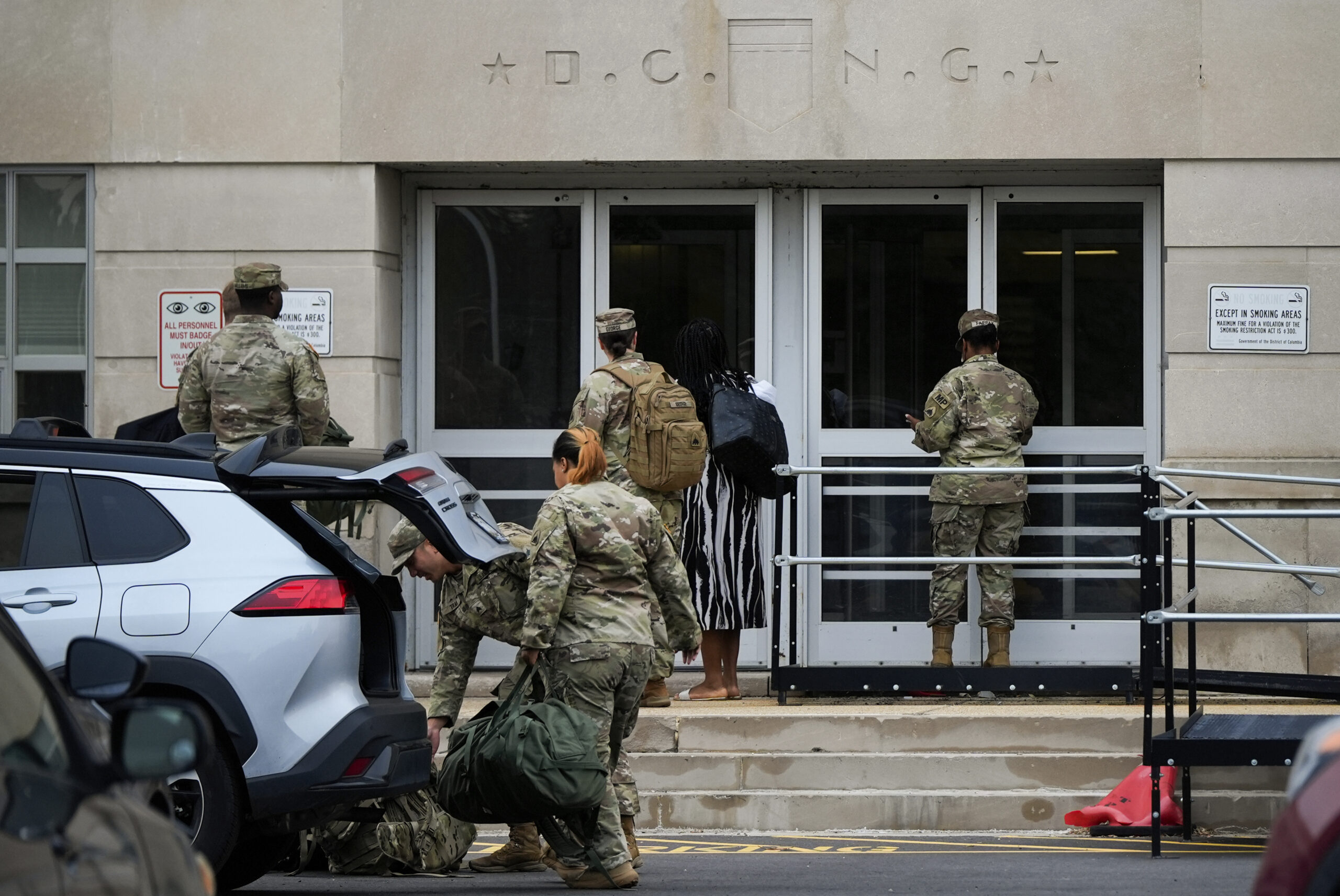
Donald Trump’s unprecedented takeover of Washington, D.C.’s police force is testing the limits of his presidential authority and ratcheting up fears that other cities also led by Black elected officials will soon be caught in his crosshairs.
Trump, citing flimsy and misleading statistics, declared a “crime emergency” in the nation’s capital, seizing control over local law enforcement from three-term Mayor Muriel Bowser and deploying some 800 National Guard troops to city streets.
“This is Liberation Day in D.C. and we’re going to take our capitol back,” Trump proclaimed, echoing World War II-era language associated with emancipation of Italy from facism and the German Nazi occupation. Trump added that his action would “rescue our nation from crime, bloodshed, bedlam and squalor and worse.”
The National Guard troops, who will work alongside the Metropolitan Police officers, will be tasked with clearing homeless encampments, protecting landmarks and keeping order in the city. It’s an unprecedented presidential power grab that Bowser herself said is unnecessary, but has very little recourse to stop given the “special conditions” outlined in the Home Rule Act.
While Trump’s supporters have cheered him on, his detractors say the move is nothing more than the president, once again, leaning into racist tropes to cast Black elected officials as incompetent and minority citizens as threats to society. During his wide-ranging press conference, Trump also singled out Baltimore, Chicago, Los Angeles, New York and Oakland — all of which have Black mayors and large minority populations that overwhelmingly voted against him in his three presidential runs — as crime ridden.
“He has never thought well of Black elected leaders, and he’s been explicit about that,” said Maya Wiley, the president and CEO of the Leadership Conference on Civil and Human Rights. She added that she views Trump’s actions as a tactic to undermine liberal dissent.
“It’s also clear from his previous statements that he has always searched for excuses to assert might over places he does not have political support and that will not just do his bidding,” she added. “Washington, D.C., has been one of those cities.”
Bowser worked to quell tensions between her and Trump stemming from his first term, which included painting over the yellow letters of the city’s Black Lives Matter Plaza, which was formed in a response to police brutality during the national protests of 2020. Prior to Trump’s inauguration she traveled to Mar-a-Lago to discuss possible areas of collaboration.
In late April, with Trump’s backing, Bowser helped lure the Washington Commanders NFL franchise from suburban Maryland back to D.C. Days later, she appeared with him at the White House to announce the city would host the NFL Draft in 2027. (Last month, Trump injected himself again by threatening to scuttle the deal to bring the football team back to D.C. if the team didn’t return to its original name, which is considered a racial slur against Native Americans.)
None of that appears to have deterred Trump from launching his federal takeover.
“I think this is a moment for the mayor to question whether her strategy, which has been appeasement, has been a success,” said Paul Butler, a Georgetown law professor and former federal prosecutor.
He described Trump’s actions as a “bogus declaration” but suggested there is likely little reprieve D.C. officials will gain trying to challenge the president’s declaration in court.
“While the court reviews whether he appropriately has this power, the Supreme Court and other lower courts [have] generally allowed him to … proceed with what he wants to do, until they get around to deciding the case,” Butler added. “It opens the doors to further militarization of the police, not just in the District, but in the other cities that he named.”
New York City mayor Eric Adams on addressed the possibility of Trump deploying federal assets to his own city following a string of shootings over the weekend that left at least two dead and eight injured.
“When you have those high profile shootings it sends a signal sometimes across the country that we’re dealing with a crime issue in New York, and we’re not,” Adams said Tuesday. “I’m not part of the group that says we don’t want to work with the federal government, but we don’t need anyone to come in and take over our law enforcement apparatus. We’ve got this under control.”
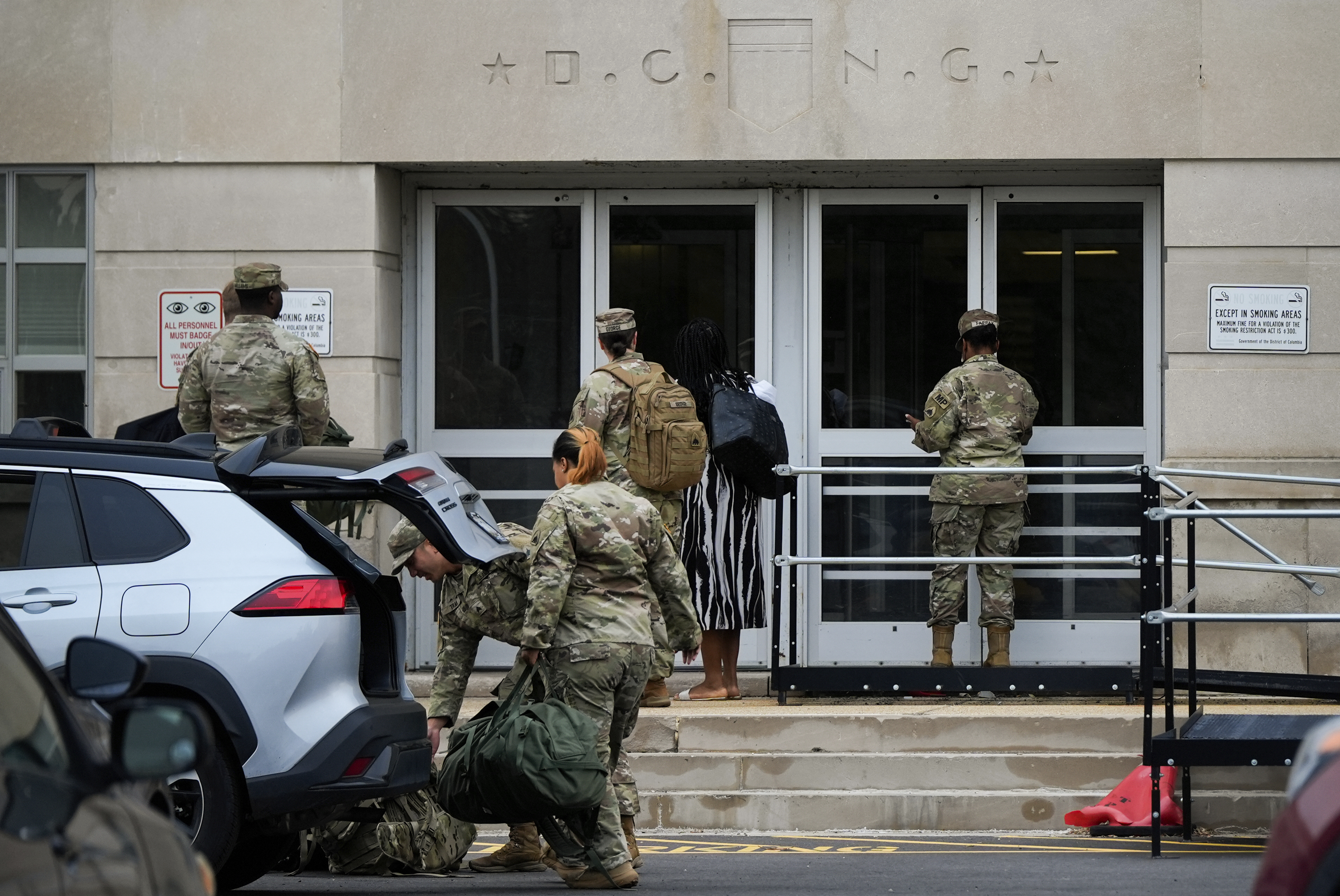
Trump has ignored the wishes of local officials and deployed federal troops in recent weeks. During the height of federal immigration raids in Los Angeles, which sparked protests that turned violent, Trump federalized some 2,000 California Guard troops against the objections of Mayor Karen Bass, who is Black, and California Gov. Gavin Newsom.
Baltimore Mayor Brandon Scott told The Recast that Trump’s actions in D.C. and his singling out of other Black-led jurisdictions, including his own, is nothing more than a “diversion and distraction tactic” to shift the focus from a volatile economic climate and the release of materials associated with Jeffrey Epstein, the disgraced financier and convicted sex offender.
“It’s also the continuation of the president, unfortunately, spouting these racist-based, right-wing propaganda talking points about cities and Black-led cities,” said Scott, who last month said his city is in the midst of a historic reduction in violent crime. “For the president to say that we’re too far gone — it’s just obscene, obnoxious and just not based in reality.”
Maryland Gov. Wes Moore, a combat veteran, chastised Trump for using military personnel for political gain.
“These actions by the president lack both data and a battle plan,” Moore said in a statement.
“[The president] is simply using honorable men and women as pawns to distract us from his policies, which continue to drive up unemployment and strip away health care and food assistance from those who need it most.”
Chicago Mayor Brandon Johnson echoed Moore’s sentiments.
“If President Trump wants to help make Chicago safer, he can start by releasing the funds for anti-violence programs that have been critical to our work to drive down crime and violence,” Johnson said. “Sending in the National Guard would only serve to destabilize our city and undermine our public safety efforts.”
The pretext of Trump’s actions appears to be a response to an attack on Edward Coristine, who is white and a former staffer at DOGE who goes by the nickname “Big Balls.” He was allegedly assaulted by approximately 10 juveniles near Dupont Circle this month, according to a police report obtained by Blue Light News.
It caught the attention of Trump, who posted on his Truth Social platform a photo of a bloodied Coristine and called for D.C. laws to be changed so that teenagers who commit violence can be tried as adults “and lock them up for a long time, starting at age 14.”
Trump is deputizing key administration officials to help oversee the D.C. police, which he can maintain control of for up to 48 hours, but if he sends a special message to certain congressional leaders, he can extend that control for up to 30 days. Attorney General Pam Bondi will be in charge of D.C. police, Defense Secretary Pete Hegseth will direct the order to call up troops, while the District’s U.S. Attorney Jeanine Pirro said on Monday that she is preparing to bolster prosecutions.
Bowser, the D.C. mayor, delivered a measured response to the federal takeover in her remarks following Trump’s announcements.
“While this action [Monday] is unsettling and unprecedented, I can’t say that, given some of the rhetoric of the past, that we’re totally surprised,” she said.
Maya Kaufman and Shia Kapos contributed to this report.
Like this reporting? Subscribe to The Recast.
Politics
White House officials turn up the heat on Indiana redistricting
Pressure is mounting on Republicans in Indiana to take up redistricting ahead of the midterms, with both White House officials privately pressuring lawmakers and a mysterious group urging voters to call their elected officials in support of it.
White House Intergovernmental Affairs Director Alex Meyer in his personal capacity has called several lawmakers in the state pressing them to redistrict, according to a person familiar with the calls granted anonymity to discuss them.
One lawmaker said to have received a call declined to comment.
The White House is also inviting Indiana Republicans to a meeting in Washington, according to invitations reviewed by Blue Light News. More than four dozen — including the state House speaker and Senate president — have agreed to attend and two have declined, according to a Republican close to the White House.
The White House did not immediately respond to a request for comment.
The calls are part of its broader strategy to use redistricting in order to gain an advantage in the midterms and help Republicans cling to their small House majority.
It’s not just the White House that’s amping up the pressure. MAGA faithfuls, like influencer Charlie Kirk, have also been telling Indiana lawmakers to get on board. In a recent post on X, Kirk asked if Indiana state officials are “going to ignore President Trump, the majority of their voters, and the GOP Grassroots across the country by REFUSING to redistrict Indiana’s Congressional Seats? Let’s hope they are better than that!”
At the same time, a recent robocall received by a Blue Light News reporter living in Indiana accuses Democratic Govs. Gavin Newsom of California and Kathy Hochul of New York of using redistricting with a goal of “ending the Trump presidency” and urges listeners to call GOP state Rep. David Hall and tell him to back the effort.
“We can stop these radicals by doing our own redistricting here in Indiana,” the call said.
The call went to residents of the district of Republican State Rep. Danny Lopez, who came out against redistricting. The narrator identifies the call as paid for by Forward America. There is little public information about the group.
Lopez declined to comment.
The intensive public and private pressure comes as Newsom pushes forward with his plan to offset the potential five-seat gain for Republicans in Texas. The Texas state legislature has been at a standstill since Democratic lawmakers left to prevent the state House from reaching quorum to pass the map. Abbott called a second special session on Friday, and Democratic lawmakers have indicated they are willing to return soon.
Politics
Texas Gov. Greg Abbott immediately calls second special session for redistricting
Texas Gov. Greg Abbott immediately called another special session to pass a new congressional map, after the first attempt failed due to Texas Democrats leaving the state to deny Republicans the ability to carve out additional GOP seats.
The second special will begin just two hours after the first special wrapped, at noon central time on Friday. Texas Democrats left the state nearly two weeks ago in protest of the redraw, which GOP leaders are pursuing at the request of President Donald Trump.
Abbott’s proclamation was largely the same as the first one, which lays out 19 agenda items, including redistricting and disaster relief for Central Texas flood victims.
“Delinquent House Democrats ran away from their responsibility to pass crucial legislation to benefit the lives of Texans,” the Republican governor said in a statement. “We will not back down from this fight. That’s why I am calling them back today to finish the job.”
Most Texas Democrats on the lam are stationed in Illinois but the stalemate appears to be winding down, with the House Democratic Caucus setting conditions for their return.
Politics
Democrats squint and see chances at a Senate majority
Democrats are starting to finally see their path back to power in the Senate — if they squint really, really hard.
Party leaders have landed top recruits in Ohio and North Carolina, both pickup opportunities. They hope a snowball effect will push their favorite candidate in Maine, another offensive target, into that race in a state former Vice President Kamala Harris won.
There are other, rockier potential targets: Perhaps they could finally win Texas, where Republicans are locked in a messy, expensive primary. Or Alaska, where senior Democrats are courting a dynamic former congresswoman. Or maybe, they hope, Iowa could become a purple state again.
There’s no doubt that Republicans are still favored to hold onto the Senate after next year’s midterms. Democrats need to flip four GOP-held seats while also holding onto states that President Donald Trump won like Michigan and Georgia. Everything would have to go perfectly for them to pull it off — and this is not an era when things have typically gone perfectly for Democrats.
Still, Democrats are increasingly optimistic after former Sen. Sherrod Brown decided to run for his old seat and former Gov. Roy Cooper launched a bid in North Carolina.
“I’m not going to say we’re taking back the Senate right now, but it looks more possible than it ever was,” said Rep. Maxwell Frost (D-Fla.). “We’re recruiting great candidates and it looks like they’re not really doing the same. The map is expanding week by week.”
Earlier this year, many Democrats were pessimistic that Brown would run again — and without him, Ohio was considered hopelessly out of reach. Senate Minority Leader Chuck Schumer doggedly pursued Brown anyway, repeatedly calling and meeting with him. Brown is expected to officially launch his campaign against Republican Sen. Jon Husted any day now.
Brown, a frumpy populist who won three terms in the Senate even as Ohio grew increasingly redder, lost reelection by fewer than 4 percentage points last year. What makes Democrats nonetheless hopeful is that Brown kept the contest close even as Trump carried the state by 11 percentage points. With Trump in the White House but not on the ballot, they hope, next year’s midterm elections will almost certainly be a better political moment for Democrats.
“Unless you believe we’re headed into another negative environment for Democrats again, this is almost by definition a toss-up race,” said an Ohio Democratic strategist who was granted anonymity to speak frankly about a still-developing race.
Schumer also worked to persuade Cooper, a popular former two-term governor, to run. Cooper broke fundraising records when he announced his Senate bid and is now leading Republican Senate candidate Michael Whatley in early polls.
Schumer’s recruitment efforts are reflective of a larger strategy to stake his party’s chances in several key states on well-established, older candidates, even as much of the Democratic base hungers for generational change. Along with Cooper, 68, and Brown, 72, Democrats are hoping to lure Maine Gov. Janet Mills, 77, into the race against Republican Sen. Susan Collins, 72.
The Democrats’ game plan doubles, in theory, as a way to avoid costly and divisive primaries. Cooper effectively boxed out most of the North Carolina field by keeping the door open to a run, and the sole other Democratic candidate, former Rep. Wiley Nickel, exited the race after Cooper launched his bid. Brown is also expected to clear the field in Ohio.
Nickel told Blue Light News his initial decision to run was about “fighting for the best chance to flip North Carolina’s Senate seat,” but with Cooper getting in, he said the former governor “gives Democrats our best shot to flip this seat.”
The success that Senate Democrats have had in luring battle-tested candidates into the arena stands in contrast to Republicans’ efforts this cycle.
Georgia Gov. Brian Kemp, widely seen as a strong potential contender to oust Democratic Sen. Jon Ossoff, decided against a run. Former New Hampshire Gov. Chris Sununu similarly opted against a bid for the seat left open by the retirement of Democratic Sen. Jeanne Shaheen, even after winning Trump’s support.
Republicans have also lost an incumbent to retirement — and there could be more.
North Carolina Sen. Thom Tillis announced he was not running for reelection after Trump attacked him for voting against advancing his megabill. In Iowa, Sen. Joni Ernst has not formally announced she is seeking reelection, and the White House saw it necessary to encourage her to try for another term. Collins got her dream job as Senate Appropriations chair only to see her power undermined by Trump, and Democrats are praying she could be next, though she’s said she intends to run again.
Democrats are also hopeful that contentious GOP primaries could bolster their chances to hold Ossoff’s seat in Georgia and turn Texas blue if MAGA darling Attorney General Ken Paxton ousts incumbent GOP Sen. John Cornyn as polling indicates he might.
“From nasty, expensive primaries to a string of embarrassing recruitment failures and a toxic agenda, Senate Republicans are falling apart at the seams,” said Democratic Senatorial Campaign Committee spokesperson Maeve Coyle.
But Democrats have their own crowded primaries to contend with. An ambitious field of three well-funded Democrats in Michigan is threatening to divert resources from defeating Republican Mike Rogers, a former congressman who narrowly lost a Senate race to Elissa Slotkin last year. The GOP quickly consolidated behind Rogers rather than risk a contested primary.
And Democrats are still hoping for other top recruits to enter races. In Maine, Schumer has yet to persuade Mills to get into the Senate race. Ditto for former Rep. Mary Peltola in Alaska, where she is also eyeing the gubernatorial contest after narrowly losing reelection to the House last year.
There are other hurdles for Democrats. They lack a clear leader, are struggling to raise money, and remain unpopular with voters after their resounding defeat in last year’s election.
“The idea that Democrats, saddled with historically low approval ratings, will win in red states with candidates like Brown and Peltola — who voters just rejected — is absurd,” said Joanna Rodriguez, a spokesperson for the National Republican Senatorial Committee.
But optimistic Democrats know that a single strong candidate — perhaps a Cooper, Brown, Mills, Peltola — can singlehandedly reshape a race. And maybe if they can get a few more of them, their path to control starts to get a little clearer.
Even without squinting so hard.
-
Uncategorized9 months ago
Bob Good to step down as Freedom Caucus chair this week
-

 The Josh Fourrier Show9 months ago
The Josh Fourrier Show9 months agoDOOMSDAY: Trump won, now what?
-
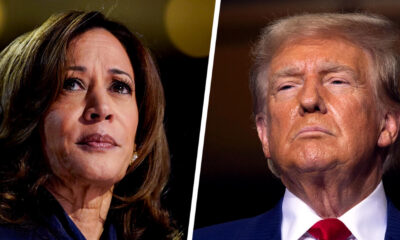
 Politics9 months ago
Politics9 months agoWhat 7 political experts will be watching at Tuesday’s debate
-
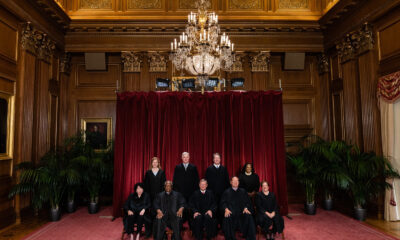
 Politics9 months ago
Politics9 months agoHow Republicans could foil Harris’ Supreme Court plans if she’s elected
-
Economy9 months ago
Fed moves to protect weakening job market with bold rate cut
-
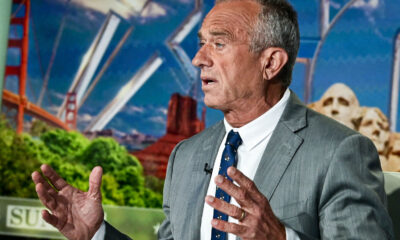
 Politics9 months ago
Politics9 months agoRFK Jr.’s bid to take himself off swing state ballots may scramble mail-in voting
-

 The Dictatorship6 months ago
The Dictatorship6 months agoPete Hegseth’s tenure at the Pentagon goes from bad to worse
-
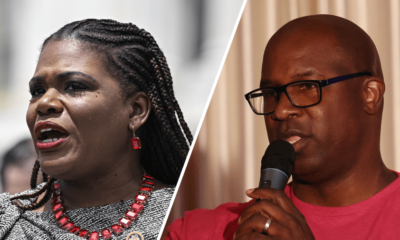
 Politics6 months ago
Politics6 months agoFormer ‘Squad’ members launching ‘Bowman and Bush’ YouTube show



